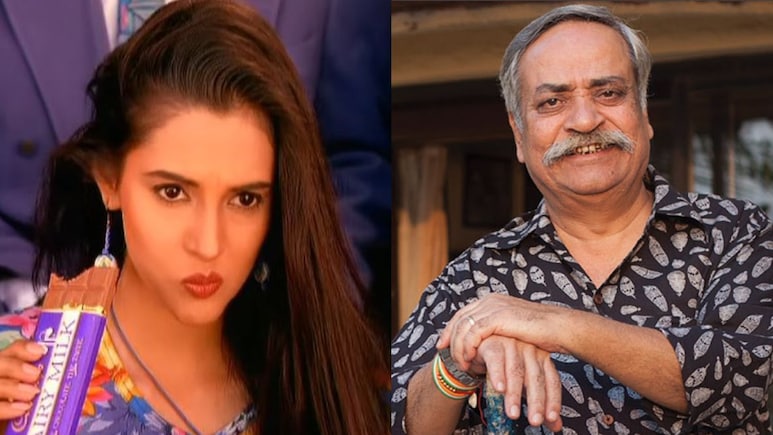
Veteran adman Piyush Pandey, the man who gave India its most memorable jingles and campaigns, died in Mumbai on Friday. He was 70.
From Fevicol's witty "Jor laga ke haisha" to Asian Paints' "Har ghar kuch kehta hai," his work shaped the language of Indian advertising.
But among his countless creations, there's one that still dances through people's memories - quite literally.
A young woman in a blue printed dress breaks into an unrestrained jig on a cricket field as her favourite player hits the winning shot.
Security guards try to stop her, but she twirls past them in pure, childlike joy, chocolate still in hand. The crowd roars, the music swells, and a line appears on-screen: "Asli swaad zindagi ka."
That 1994 Cadbury Dairy Milk ad wasn't just a commercial; it was a cultural moment. And behind that moment was Piyush Pandey's instinct, a boarding pass scribbled with lyrics, and a spontaneous dancer named Shimona Rashi, who became India's sweetheart long before anyone had "gone viral."
A Crisis, A Flight, And A Tune Written On A Boarding Pass
It all began in 1994 when Cadbury faced an image problem. The brand was seen as a treat for children, something parents bought, not something adults craved. The brief to Ogilvy was simple yet daunting: make chocolate cool for grown-ups.
At the time, Piyush Pandey was on a Diwali vacation in the United States. The call from his boss came with urgency: Cadbury wanted something extraordinary, or the account could be lost. Pandey booked the next flight home to Bombay.
Somewhere over the Atlantic, on the back of his boarding pass, he jotted down what would become the ad's emotional hook: "There's something so real... in everyone. There's something so real... ask anyone."
Once home, he called his friend, legendary jazz musician Louis Banks, who composed the tune in just 15 minutes before heading to catch another flight. The English version was sung by Gary Lawyer, and the recording was wrapped up in a day.
But Pandey felt the song needed to sound Indian and reach hearts, not just ears. He rewrote the lyrics in Hindi, keeping the meter of Banks' scratch tape, and approached Shankar Mahadevan to record the new version.
Mahadevan's gentle "harkats" in the "Kuch Swaad Hai" refrain added the final magic touch.
Finding The Girl Who Danced Her Way Into History
Music ready, concept locked, all that was missing was a face - someone who could embody uninhibited joy. Piyush Pandey and his team didn't want a glamorous model or a perfectly trained dancer. They wanted realness, someone who could move like no one was watching.
Enter Shimona Rashi. She wasn't a professional dancer. In fact, she got the part precisely because she wasn't one. Her dance style was raw, expressive, and unchoreographed, just what Pandey had envisioned.
The ad was directed by Mahesh Mathai and shot at Brabourne Stadium in Mumbai. Shimona's sequence was captured in a single take. No retakes, no elaborate rehearsals - just her, the chocolate, and the music. Her unrestrained dance - half hop, half spin - became the heartbeat of the ad.
"When we saw her move, we knew it was perfect," an Ogilvy team member later recalled. "It didn't look performed. It looked felt," he added.
When India Fell In Love With Joy (And Chocolate)
The ad hit television screens and instantly became a phenomenon. For a generation that grew up watching it between cricket matches and news bulletins, the image of the Cadbury girl was joy personified.
Speaking to ThePrint, Prakash Nair, Associate President and Integrated Brand Leader at Ogilvy & Mather, explained the significance of that shift, "Before the ad came out, Cadbury chocolate was always targeted as a gift from a parent to a child. The brand needed real impetus for growth. That's when this campaign came in - it was meant to appeal not just to kids but the kid in everyone."
The ad went on to win every major advertising award and was later named "Campaign of the Century" at the Advertising Club Bombay's Abby Awards. But its real triumph was cultural. It made chocolate and joy ageless.
A Legacy That Outlasted Its Time
Decades later, in 2020, Ogilvy revisited the idea with a gender-swapped version - this time featuring a young man running onto the field as a woman hits the winning shot.
The idea, pitched by Swagata Banerjee and Samyu Murali with contributions from Kainaaz Karmakar, Sukesh Nayak, and Harshad Rajadhyaksha, received Piyush Pandey's blessing with one condition: "Do everything you've planned, but do not change the music."
Even in a new era of algorithms and hashtags, that melody, born on a cramped flight and set to an untrained dancer's rhythm, still tugs at the heart.
And perhaps that's Piyush Pandey's greatest legacy. He didn't just make ads. He made memories, and in doing so, turned everyday moments into something truly "khaas."
Also Read: How Ad Legend Piyush Pandey Gave India Its Iconic Mile Sur Mera Tumhara Song
Track Latest News Live on NDTV.com and get news updates from India and around the world

